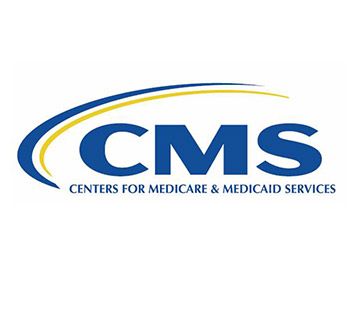On February 12, 2016, the Centers for Medicare and Medicaid Services (CMS) issued a final rule titled “Medicare Program; Reporting and Returning Overpayments.” This final rule would implement Section 6402(a) of the Affordable Care Act, which imposed a 60-day requirement on Medicare providers and suppliers to report and return overpayments. The provisions of this final rule will go into effect on March 16, 2016.
The final rule implements changes that were first proposed as part of a February 16, 2012 proposed rule. The final rule can be viewed in its entirety by clicking here.
Background
Section 6402(a) of the Affordable Care Act requires health care providers and suppliers to report and return a Medicare overpayment within 60 days of the date such overpayment is “identified”. Any overpayment not returned within this timeframe would become an “obligation” under the False Claims Act. As a result, any ambulance service that is found to have knowingly retained an overpayment beyond the 60 day period could be subject to False Claims Act liability. In addition, violations may also subject an ambulance company to civil monetary penalties and possible exclusion from the Medicare program.
Provisions of Proposed Rule
Definition of an “Overpayment”
In the final rule, CMS defined an overpayment as “any funds that a person has received or retained under title XVIII of the Act to which the person, after applicable reconciliation, is not entitled under such title.” CMS noted that this definition is mirrors the definition of an overpayment that appeared in Section 6402(a) of the Affordable Care Act.
CMS cited examples of certain common overpayments in the proposed rule, including:
- Payments for non-covered services;
- Payments in excess of the applicable Medicare allowable
- Errors and nonreimbursable expenditures included on a cost report;
- Duplicate payments; and
- Payment from Medicare when another payor had primary responsibility.
For ambulance providers and suppliers, another common area of overpayments would be payment for excessive mileage.
Note: in the final rule, CMS clarified that, in instances where the paid amount exceeds the appropriate payment to which a provider or supplier is entitled, the “overpayment” would be limited to the difference between the amount that was paid and the amount that should have been paid. For example, if the overpayment was the result of a claim incorrectly being billed as an ALS emergency, rather than a BLS emergency, the overpayment is not the entire amount of Medicare’s payment. Rather, the overpayment is limited to the difference in Medicare’s payment for the two base rates.
When an Overpayment has been “Identified”
In its proposed rule, CMS indicated that an overpayment would be “identified” if the ambulance provider or supplier: (1) had actual knowledge of the existence of the overpayment or (2) acted in reckless disregard or deliberate ignorance of the existence of the overpayment. CMS indicated that this definition was intended to prevent providers and suppliers from deliberately avoiding activities that might uncover the existence of potential overpayments, such as self-audits and outside compliance checks.
CMS further stated its belief that the Proposed Rule would, in some instances, place an affirmative burden on providers and suppliers to investigate whether a potential overpayment exists. Specifically, CMS indicated that “in some cases, a provider or supplier may receive information concerning a potential overpayment that creates an obligation to make a reasonable inquiry to determine whether an overpayment exists.” If the provider or supplier then fails to reasonably inquire, it could be found to have acted with reckless disregard or deliberate ignorance.
In the final rule, CMS indicated that an overpayment will be deemed to have been identified to the extent “a person has, or should have through the exercise of reasonable diligence, determined that the person has received an overpayment and quantified the amount of the overpayment.”
Thus, the final rule makes two important changes to the standard of when an overpayment is identified. The first change is to clarify that an overpayment has not been identified unless and until the provider or supplier is able to quantify the amount of the overpayment.
The second change was to remove the language related to “reckless disregard” and “deliberate ignorance”. CMS replaced these terms with a standard of “reasonable diligence”. Under the new standard, an overpayment is identified on the date you can actually quantify the size of the overpayment, or the date on which you would have been able to quantify the overpayment had you proceeded with reasonable diligence to investigate the possibility of an overpayment. For these purposes, CMS indicated that reasonable diligence would be established to the extent you can demonstrate a timely, good faith investigation of any credible report of a possible overpayment. Note: CMS indicated that an investigation should take no more than 6 months from the date of receipt of credible information, except in extraordinary circumstances.
To see the impact of these changes, consider the following scenario:
You receive an anonymous report on your compliance hotline that a recent change to your billing software has resulted in the mileage for all Medicare claims being rounded up to the next whole number (as opposed to being submitted with fractions of a mile). Based on this report, you begin an investigation, and quickly come to the conclusion that the anonymous report is correct. However, it requires an addition 4 months to review every claim submitted to Medicare since that software change, and to calculate the actual amounts you were overpaid.
Under the standard first proposed by CMS, it was unclear whether the 60-day clock to return over payment started on the day you confirmed the software problem, or whether you have time to look at your entire claims universe to calculate the actual amounts you were overpaid. By contrast, under the standard set forth in the final rule, it is clear that the overpayment would not be “identified” until you can quantify the actual amounts you had been overpaid. In the above example, you completed your investigation within 6 months, meaning you would have satisfied the new “reasonable diligence” standard. Therefore, assuming you make a timely report and refund of the amounts you were overpaid, you would have no liability under the False Claims Act.
Situations in Which a Provider or Supplier would have a Duty to Inquire
In the proposed rule, CMS provided some examples of situations where a provider or supplier would be deemed to have received a credible information regarding a potential overpayment, including the following situations:
- Where a review of billing records indicates that you were incorrectly paid a higher rate for certain services;
- Where you learn that the patient died prior to the date of service on a claim that has been submitted for payment;
- Where you discover that the services were provided by an unlicensed or excluded individual;
- Where an internal audit discovers the presence of an overpayment.
- Where you are informed by a government agency of an audit that discovered a potential overpayment, and where you fail to make a reasonable inquiry;
In the final rule, CMS confirmed its belief that official findings from a government agency (or its contractors) would constitute credible evidence of a potential overpayment, and would therefore trigger a provider’s or supplier’s obligation to conduct an investigation with reasonable diligence. If the provider or supplier ultimately agrees with the Medicare contractor’s findings, it would qualify as having “identified” an overpayment, which would trigger the 60-day period for reporting and refunding that overpayment. CMS further indicated that when the provider confirms the audit’s findings, the provider or supplier may be deemed to have credible evidence of additional overpayments (i.e., claims presenting the same issues, but which fall outside the contractor’s audit period) that may require further investigation. CMS did agree, however, that where the provider or supplier elects to appeal the contractor’s findings, it would be reasonable to hold off on conducting an investigation into similar claims until such time as the overpayment identified by the Medicare contractor has worked its way through the administrative appeals process.
Counting 60-Day Period
In the final rule, CMS indicated that the 60-day period for reporting and returning the overpayment would start on the date the overpayment is first identified (i.e., the date the overpayment is first quantified following a reasonably diligent inquiry. However, in the event a person fails to conduct a reasonably diligent inquiry, the 60-day period will be deemed to run from the date the provider or supplier first received a credible report of a possible overpayment (assuming the provider or supplier was, in fact, overpaid).
Process for Reporting Overpayments
In its February 2012 proposed rule, CMS had indicated that it would require ambulance providers and suppliers to report and return overpayments using the existing process for voluntary refunds. At that time, CMS also proposed that the overpayment report contain 13 required elements, including a brief statement of the reason for the overpayment, and a description of the steps the provider or supplier intended to take to ensure that the same error would not occur again. At the time, CMS further indicated that it would develop a uniform reporting form that would replace the various forms currently in use by its Medicare contractors.
In the final rule, CMS abandoned this formulaic approach to the reporting of overpayments. Instead, CMS elected to permit providers or suppliers to use any of the following to report an overpayment:
- An applicable claims adjustment;
- Credit balance;
- Self-Reported Refund; or
- Any other reporting process set forth by the applicable Medicare contractor.
In addition to the processes currently used by Medicare contractors, providers or suppliers can also satisfy the reporting obligations of the final rule by making a disclosure under the OIG’s Self-Disclosure Protocol or the CMS Voluntary Self-Referral Disclosure Protocol. Note: these processes are generally reserved for situations that involve something more than an isolated billing error.
When reporting an overpayment that was calculated using a statistical sampling methodology, CMS indicated that the provider or supplier must describe the actual process used to obtain a statistically valid sample, and the extrapolation methodology used.
Statute of Limitations
In the final rule, CMS adopted a 6-year “lookback period”. CMS further clarified that this lookback period is measured from the date the provider or supplier identifies the overpayment. As a result, an overpayment must be reported and returned only to the extent the overpayment is identified within 6 years of the date the overpayment was received. Overpayments identified beyond the 6-year lookback period would not be subject to the new regulations.
The 6-year lookback period represents a substantial reduction from the 10-year lookback period originally proposed by CMS. That 10-year period was intended to coincide with the outer limit of the statute of limitations for False Claims Act violations. However, after considering comments from healthcare providers and suppliers, CMS agreed that a 6-year lookback period was more appropriate. CMS noted that the change would significantly reduce the burden these new regulations imposed on providers and suppliers.
Change to Regulations Governing Reopenings
To facilitate the reporting and refunding of overpayments under these new regulations, CMS elected to revise its rules regarding reopenings. CMS will now permit its Medicare Administrative Contractors (MACs) to reopen an initial determination (i.e., a paid claim) for the purpose of reporting and returning an overpayment.
While seemingly minor, this change is needed to ensure that Medicare’s payment files properly reflect that an overpayment has been refunded. Otherwise, it would be possible for a claim that had previously been refunded to be selected by a Medicare auditor for postpayment review. This could lead to the auditor attempting to recoup amounts that had previously been voluntarily refunded.








 ALS Monitors / Defibrillators and Automated CPR Devices Related Equipment, Accessories & Product Upgrades
ALS Monitors / Defibrillators and Automated CPR Devices Related Equipment, Accessories & Product Upgrades





